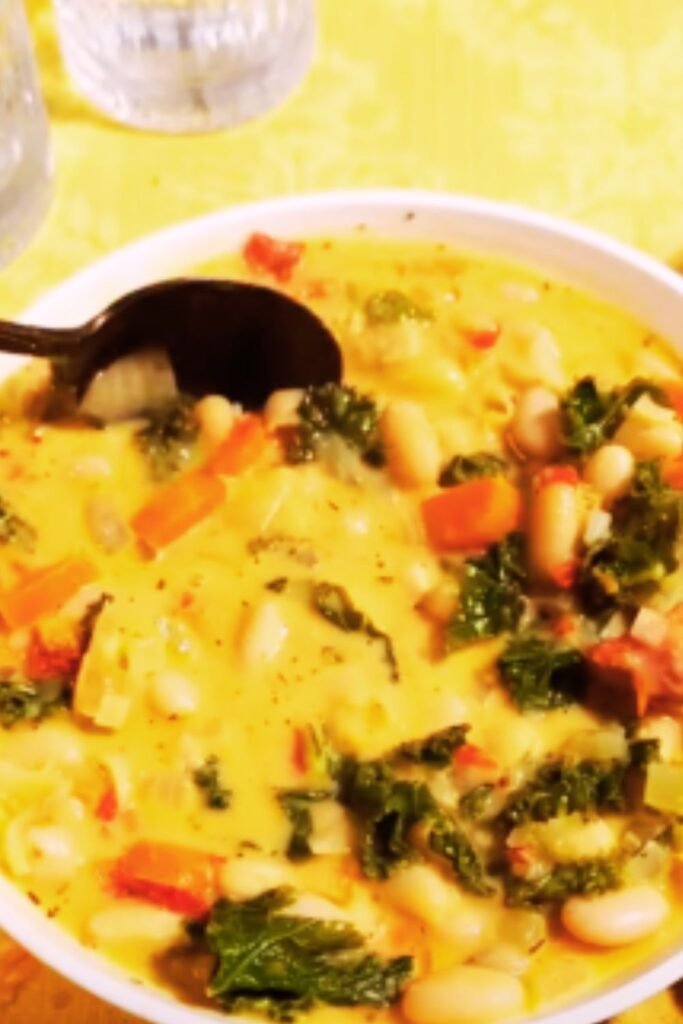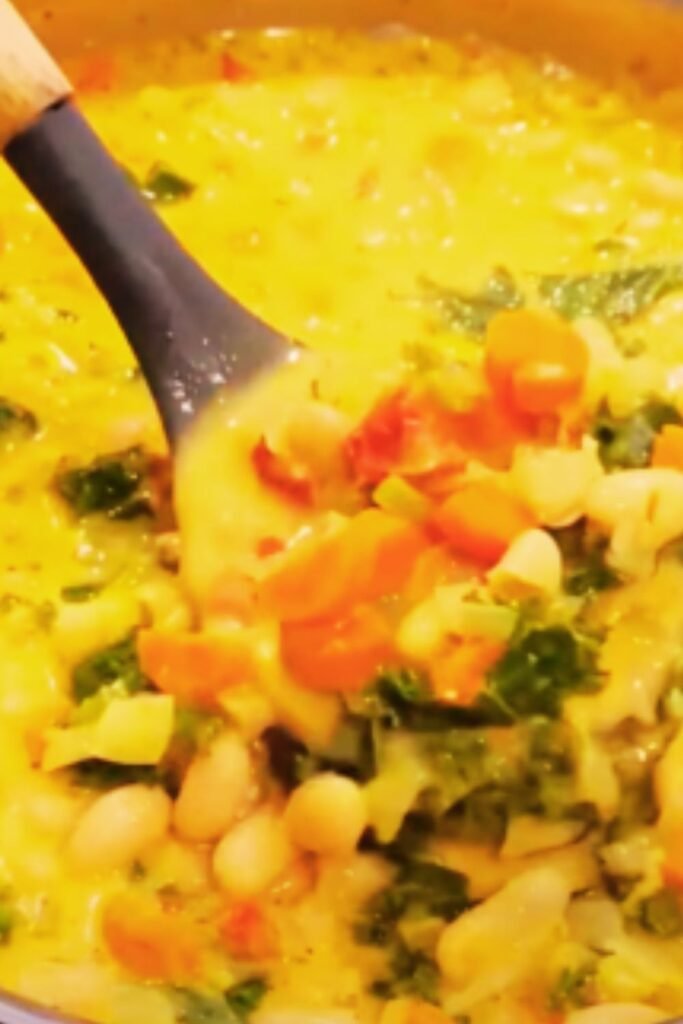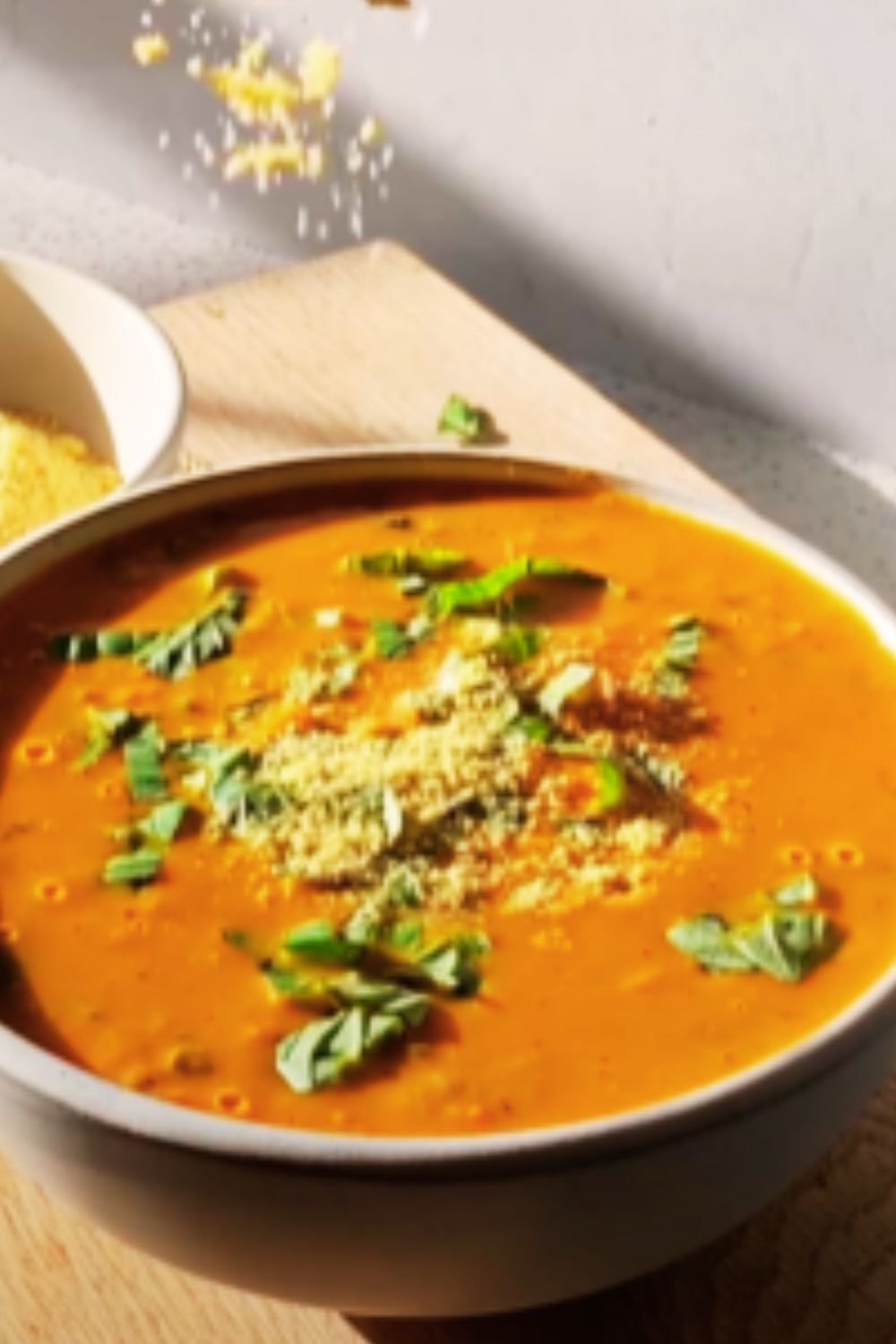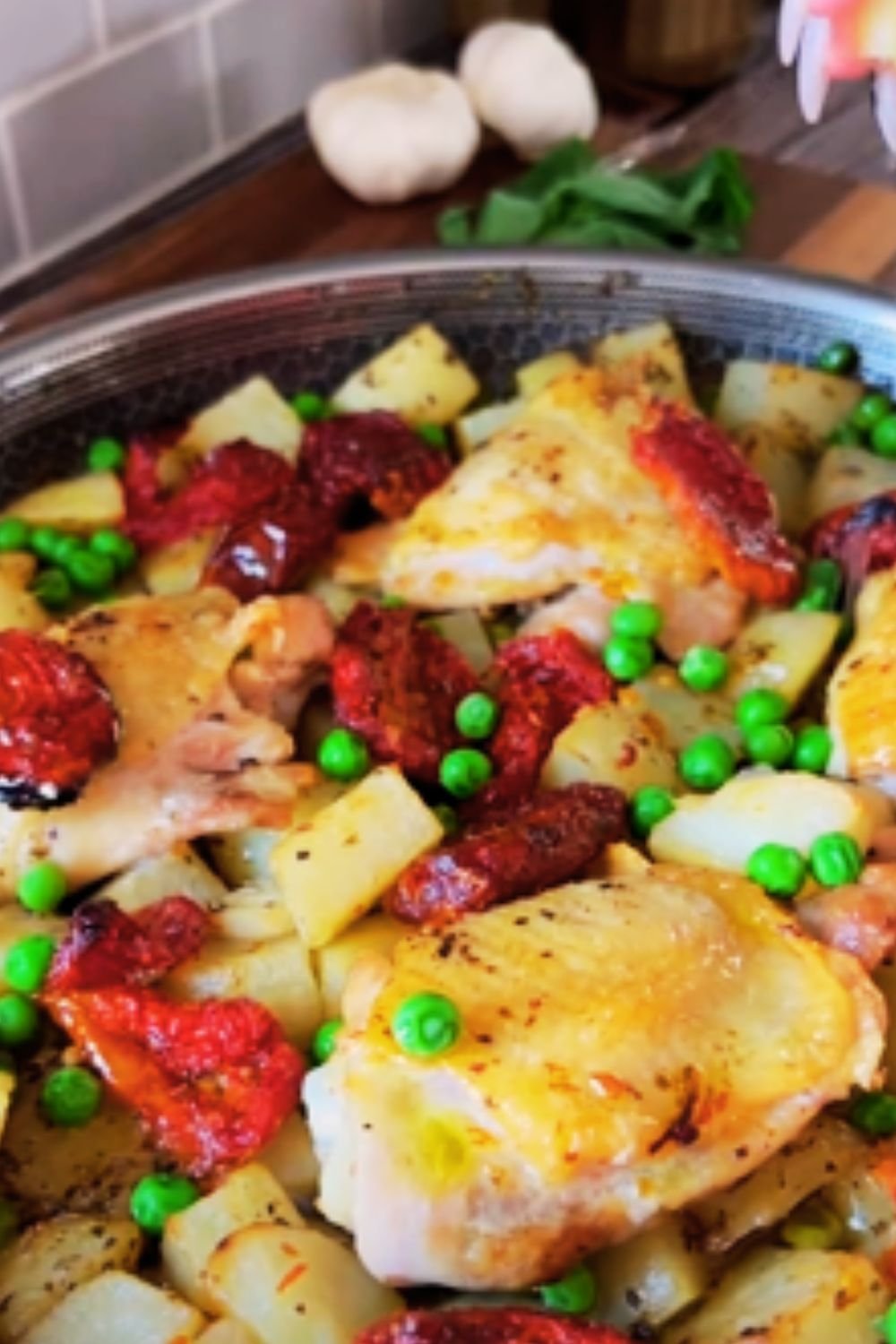There’s something incredibly comforting about a steaming bowl of Tuscan white bean and kale soup on a chilly evening. Known as “ribollita” in Italy, which literally means “reboiled,” this hearty peasant dish has a fascinating history and depth of flavor that has made it one of my all-time favorite soups to prepare at home.
I first encountered ribollita during a culinary adventure through Tuscany years ago. The way local families transformed humble ingredients into something so profoundly satisfying left a lasting impression on me. Since then, I’ve spent countless hours perfecting my own version, and I’m thrilled to share it with you today.
What makes ribollita special isn’t just its rich flavor profile but its resourcefulness. Traditionally, it was made by reheating leftover minestrone soup with stale bread to create a thick, porridge-like consistency. Nothing went to waste in Tuscan kitchens, and this practical approach to cooking produced some of the region’s most beloved dishes.
The Heart and Soul of Tuscan Cuisine
Ribollita encapsulates everything I love about Italian cooking—simple, seasonal ingredients transformed through time-honored techniques. No fancy equipment needed, just patience and respect for tradition. This soup is what I like to call “peasant food perfected”—proof that the most humble ingredients often create the most satisfying meals.
In Tuscany, ribollita was traditionally prepared on Fridays when Catholic tradition dictated meat-free meals. Families would gather leftover vegetables, beans, and bread from the week and create this nourishing pot of goodness that would sustain them through the weekend.
The beauty of ribollita lies in its layers of flavor. The base of aromatic vegetables (soffritto), the earthiness of beans, the slight bitterness of kale, and the way day-old bread melts into the broth creating an incredibly satisfying texture. And like most soups and stews, it tastes even better the next day.
Ingredients That Tell a Story
Before we dive into the recipe, let’s talk about what makes an authentic ribollita. Every ingredient plays a crucial role:
Key Components of Traditional Ribollita
- Cannellini Beans: These creamy white beans form the foundation of the soup, providing protein and a velvety texture.
- Cavolo Nero: This Italian black kale is traditional, though curly kale works beautifully too.
- Stale Tuscan Bread: Unsalted bread is authentic, but any good-quality crusty bread will do.
- Soffritto: The aromatic base of carrots, celery, and onions that begins countless Italian dishes.
- Tomatoes: Providing acidity and depth to balance the earthiness of the beans.
- Herbs: Rosemary, thyme, and bay leaf create the quintessential Tuscan flavor profile.
What I love about ribollita is that it’s inherently flexible. Does your garden have Swiss chard instead of kale? Use that! No cannellini beans? Great Northern beans work wonderfully too. The spirit of ribollita is about using what you have and making something magical with it.
The Complete Recipe
Now, let’s get into the details of creating this wonderful soup in your own kitchen:
Ingredients
For the Soup Base:
- 3 tablespoons extra virgin olive oil, plus more for serving
- 1 large yellow onion, finely diced
- 2 medium carrots, finely diced
- 2 celery stalks, finely diced
- 4 garlic cloves, minced
- 1 teaspoon kosher salt, plus more to taste
- 1/2 teaspoon freshly ground black pepper
- 1/4 teaspoon red pepper flakes (optional)
- 1 tablespoon tomato paste
- 2 sprigs fresh rosemary
- 2 sprigs fresh thyme
- 1 bay leaf
- 1 parmesan rind (optional but recommended)
- 1 can (14.5 oz) diced tomatoes
- 6 cups vegetable broth (homemade preferred)
- 2 cans (15 oz each) cannellini beans, drained and rinsed, or 3 cups cooked from dried
- 1 bunch kale (about 8 oz), stems removed and leaves chopped
- 1/2 small head Savoy cabbage, cored and chopped (about 2 cups)
- 1 medium potato, peeled and diced into 1/2-inch cubes
For the Bread Component:
- 6-8 thick slices of day-old crusty bread (preferably Tuscan, but ciabatta or sourdough work well)
- 2 tablespoons extra virgin olive oil
- 2 garlic cloves, halved
For Serving:
- High-quality extra virgin olive oil
- Freshly grated Parmigiano-Reggiano
- Freshly ground black pepper
- Fresh thyme leaves
Instructions
Day One: Make the Soup Base
- In a large Dutch oven or heavy-bottomed pot, heat 3 tablespoons of olive oil over medium heat until shimmering.
- Add the diced onion, carrots, and celery (the soffritto). Cook for 8-10 minutes, stirring occasionally, until the vegetables have softened but not browned.
- Add the minced garlic, salt, black pepper, and red pepper flakes (if using). Cook for another minute until fragrant.
- Stir in the tomato paste and cook for 2 minutes, stirring frequently to prevent burning. This caramelizes the paste and adds depth of flavor.
- Add the rosemary, thyme, bay leaf, and parmesan rind (if using). Stir to combine with the vegetable mixture.
- Pour in the diced tomatoes with their juices and the vegetable broth. Bring to a simmer.
- Add half of the cannellini beans to the pot. With the remaining half, mash them roughly with a fork and add them to the pot as well. The mashed beans will help thicken the soup.
- Simmer gently, partially covered, for about 30 minutes to allow the flavors to meld.
- Add the chopped kale, cabbage, and potato. Stir to combine and continue simmering for another 20-25 minutes, or until the potato is tender and the greens are soft.
- Taste and adjust seasoning with additional salt and pepper as needed. If the soup is too thick, add a bit more broth or water.
- Remove the herb sprigs, bay leaf, and parmesan rind. At this point, you could serve the soup as is, but for authentic ribollita, proceed to the next steps.
For Traditional Ribollita (Day Two)
- Allow the soup to cool completely and refrigerate overnight. This rest period is crucial for the flavors to develop fully.
- The next day, preheat your oven to 375°F (190°C).
- Brush both sides of the bread slices with olive oil and rub with the cut sides of the garlic cloves.
- Toast the bread in the oven until golden brown, about 10 minutes.
- Break the toasted bread into pieces and place them in the bottom of a deep, ovenproof casserole dish.
- Ladle the cold soup over the bread, ensuring the bread is completely submerged.
- Cover the casserole with foil and bake for 20 minutes. Remove the foil and bake for another 10 minutes until the top is slightly crusty.
- Let stand for 10 minutes before serving.
For Quicker Version (Same Day)
- Toast the bread as directed above.
- Place a piece of toasted bread at the bottom of each individual serving bowl.
- Ladle the hot soup over the bread.
- Allow to sit for 5 minutes before serving, giving the bread time to soften and absorb the broth.
Serving
- Drizzle each portion generously with your best extra virgin olive oil.
- Sprinkle with freshly grated Parmigiano-Reggiano and a twist of black pepper.
- Garnish with fresh thyme leaves.
- Serve with additional toasted bread on the side.

The Science Behind the Magic
What makes ribollita so special isn’t just its flavors but the transformative processes at work:
| Process | Science | Culinary Effect |
|---|---|---|
| Soffritto Sweating | Slow cooking of aromatic vegetables releases water-soluble flavor compounds | Creates a flavor foundation for the entire dish |
| Bean Starch Release | Mashing some beans releases their starches into the broth | Natural thickening without flour or cornstarch |
| Overnight Resting | Allows flavor compounds to further develop and meld | Significantly enhanced flavor complexity |
| Bread Integration | Starch in bread gelatinizes as it absorbs liquid | Creates unique texture transition from broth to semi-solid |
| Oil Finishing | Fresh olive oil provides volatile aromatic compounds | Adds fresh flavor notes and mouthfeel |
This scientific understanding helps explain why certain traditional techniques produce such outstanding results. I’ve found that respecting these processes, rather than trying to rush them, makes all the difference in achieving an authentic ribollita.
Seasonal Variations Worth Trying
While I love the classic recipe, ribollita was born from the spirit of using what’s available. Here are some seasonal adaptations I’ve experimented with:
Spring Ribollita
- Add fresh peas and tender young spinach
- Use spring onions instead of yellow onions
- Finish with lemon zest and fresh herbs like basil
Summer Ribollita
- Add diced zucchini and yellow squash
- Use fresh tomatoes instead of canned
- Incorporate fresh basil and a touch of lemon juice
Fall Ribollita (Classic)
- Perfect as written in the main recipe
- Consider adding some butternut squash
- Finish with sage or rosemary oil
Winter Ribollita
- Add root vegetables like turnips or parsnips
- Use hearty greens like collards along with kale
- Consider adding dried porcini mushrooms for umami depth

Making It Your Own: Customization Ideas
While respecting tradition, I believe in making recipes work for your own kitchen and preferences. Here are some adaptations I’ve found successful:
Dietary Adaptations
- Gluten-Free: Use gluten-free bread or substitute with cooked short-grain brown rice
- Vegan: Skip the parmesan rind and cheese garnish
- Higher Protein: Add some cooked farro or wheat berries
- Lower Carb: Reduce bread amount and increase vegetables
Flavor Boosters
For those times when you want to experiment beyond the traditional version:
- Add a tablespoon of white miso paste for umami depth
- Finish with a drizzle of aged balsamic vinegar
- Add roasted garlic instead of raw for a mellower flavor
- Include a spoonful of pesto when serving in warmer months
Troubleshooting Common Issues
Even experienced cooks can encounter challenges with ribollita. Here are solutions to common problems:
| Issue | Possible Cause | Solution |
|---|---|---|
| Soup too thin | Not enough bread or beans | Add more mashed beans or bread; simmer longer |
| Soup too thick | Too much bread or reduction | Add more broth or water |
| Bland flavor | Insufficient salt or cooking time | Add salt gradually; increase simmer time; add parmesan rind |
| Greens too tough | Insufficient cooking time | Continue cooking until tender; cut into smaller pieces |
| Beans still firm | Old beans or insufficient cooking | Extend cooking time; next time soak beans longer |
| Bitter taste | Kale variety or burned garlic | Balance with a touch of honey; ensure garlic doesn’t burn |
Storage and Reheating Tips
Ribollita is one of those rare dishes that genuinely improves with time. Here’s how to make the most of leftovers:
- Refrigeration: Store cooled ribollita in an airtight container for up to 5 days. The flavors will continue to develop.
- Freezing: Freeze without the bread for up to 3 months. Thaw overnight in the refrigerator before reheating.
- Reheating: Warm gently on the stovetop over medium-low heat, stirring occasionally and adding a splash of water or broth if needed. Avoid the microwave if possible as it can make the texture inconsistent.
- Rebirth: For authentic ribollita experience, add fresh bread when reheating and allow it to incorporate fully.
- Transformation: Day three ribollita can be thinned slightly with broth and served with a poached egg on top for a hearty breakfast.
Serving Suggestions
A meal centered around ribollita feels complete and satisfying, but if you’re looking to create a full Tuscan-inspired spread, consider these accompaniments:
- A simple green salad with lemon and olive oil dressing
- Marinated artichoke hearts and olives as an appetizer
- Fresh fruit and aged pecorino cheese to finish the meal
- Sparkling water with fresh lemon
- Unsweetened iced tea with fresh mint

The Deeper Cultural Context
Understanding the cultural context of ribollita enhances appreciation for this humble soup. Historically, this dish represents the ingenuity of Tuscan peasants who created nourishing meals from limited resources.
In traditional Tuscan households, bread was baked once a week in communal ovens. As the bread hardened throughout the week, families would find creative ways to use it—ribollita being perhaps the most ingenious solution. The week’s leftover vegetables, beans, and bread would transform into a meal that actually tasted better with each passing day.
This practical approach to cooking—using what you have and wasting nothing—feels particularly relevant in our modern world where food waste is a significant issue. Ribollita reminds us that some of the world’s most delicious dishes were born not from abundance but from necessity and respect for ingredients.
Frequently Asked Questions
Can I make ribollita without kale? Yes! While kale is traditional, you can substitute other hearty greens like Swiss chard, collard greens, or even spinach (though spinach should be added in the last few minutes of cooking).
Is it really necessary to let ribollita rest overnight? For authentic flavor, yes. The resting period allows flavors to meld and deepen substantially. However, even a few hours will make a difference if you’re short on time.
Can I use canned beans instead of dried? Absolutely! While cooking from dried beans produces a slightly superior texture and broth, canned beans are perfectly acceptable and save significant time. Just be sure to rinse them well.
My soup seems too watery. How can I thicken it? The traditional thickening comes from bread and mashed beans. Add more of either, or simply simmer uncovered longer to reduce the liquid. Remember that ribollita will naturally thicken as it cools.
Can ribollita be made in advance for a dinner party? Yes, and it should be! Make it 1-2 days ahead for the best flavor. Simply reheat gently before serving, adding fresh olive oil and cheese at the table.
Is ribollita vegetarian? Classic ribollita is vegetarian (though not vegan if using cheese). Some regional variations might include pancetta or prosciutto in the soffritto, but this is not traditional.
How do I know when my ribollita is done? The vegetables should be tender but not mushy, the beans soft, and the soup should have a consistent, slightly thick texture. The flavors should be well-balanced with no one ingredient dominating.
Can I freeze ribollita? Yes, but freeze it without the bread component. Add fresh bread when reheating for the best texture.
What’s the difference between minestrone and ribollita? While both are Italian vegetable soups, minestrone typically includes pasta or rice and has a brothy consistency. Ribollita always contains bread as a thickener and is substantially heartier.
Can I make this in a slow cooker? Yes! Cook on low for 6-8 hours, adding the kale in the last hour. Toast and add the bread separately when serving.
A Final Thought
There’s something profoundly satisfying about transforming humble ingredients into something extraordinary. Ribollita embodies this transformation—bread that might have been discarded, simple vegetables, and beans combine to create one of the most comforting and nourishing dishes in Italian cuisine.
When I make ribollita at home, I’m always reminded that great cooking isn’t about fancy techniques or rare ingredients. It’s about understanding flavor, respecting tradition, and approaching food with both practicality and love. This soup has taught me more about cooking than many fancier dishes ever could.
I encourage you to approach this recipe with the spirit of Tuscan home cooks—taste as you go, adjust to your preferences, and don’t worry about precise measurements. The beauty of ribollita is in its forgiving nature and the way it welcomes adaptation.
Whether you’re making this on a cold winter evening or preparing it ahead for busy weekday lunches, I hope this ribollita brings as much joy to your table as it has to mine. Buon appetito!


